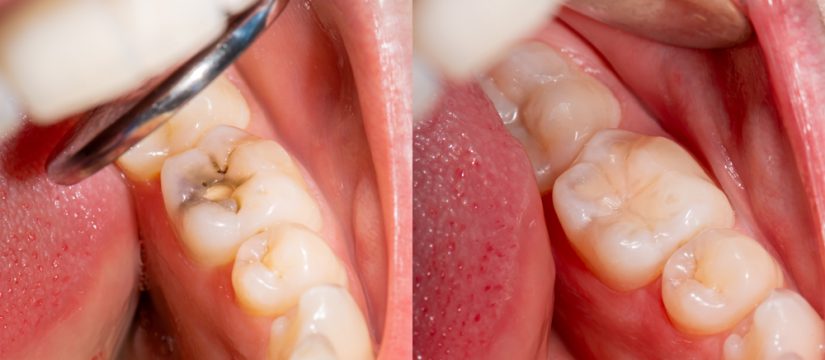
Tooth decay is damage to a tooth caused by dental plaque turning sugars into acid.
If plaque is allowed to build up, it can lead to problems, such as holes in the teeth (dental caries) and gum disease.
Dental abscesses, which are collections of pus at the end of the teeth or in the gums, may develop.
Cavities and tooth decay are among the world’s most common health problems. They’re especially common in children, teenagers, and older adults who may experience gum recession, which is where the gums pull away from the tooth, exposing the root of the tooth.
What is Tooth Decay?
Tooth decay is a disease that causes the destruction of enamel, which is the hard outer surface of a tooth. As tooth decay progresses, it can attack deeper layers of a tooth, leading to cavities.
If a person does not receive treatment for tooth decay, it can lead to more issues with the teeth and mouth. However, some treatments can help prevent or stop the spread of tooth decay.
A person with tooth decay may experience sensitivity to sugary, hot, or cold food and drinks.
A tooth consists of three layers:
- Enamel: Enamel is the hard outer layer that protects the inner layers of a tooth. Tooth enamel contains no living cells and is the hardest structure in the human body.
- Dentin: Dentin is the second layer of a tooth. When the enamel is damaged, it may expose the dentin. Small tubes within the dentin allow hot and cold food to stimulate the nerves of the tooth. The stimulation of these nerves can cause pain and sensitivity in the tooth.
- Pulp: The pulp is the centre of the tooth. The pulp contains blood vessels, nerves, and connective tissue.
A person may have a higher chance of developing Tooth decay in Panama if they:
- Have a dry mouth
- Have weak enamel due to genetics or illness
- Do not brush their teeth twice a day with fluoride toothpaste
- Have an eating disorder, such as anorexia or bulimia
- Experience acid reflux
Symptoms
The signs and symptoms of cavities vary, depending on their extent and location. When a cavity is just beginning, you may not have any symptoms at all. As the decay gets larger, it may cause signs and symptoms such as:
- Spontaneous pain or pain that occurs without any apparent cause
- Tooth sensitivity to sugary, hot, or cold food
- Constant tooth pain
- White or dark spots on the teeth
- Bad breath
- Loose fillings
- Cavities in teeth
- Food frequently trapped in teeth
- Difficulty biting certain foods
Causes
Here’s how tooth decay develops:
- Plaque forms. Dental plaque is a clear sticky film that coats your teeth. It’s due to eating a lot of sugars and starches and not cleaning your teeth well. When sugars and starches aren’t cleaned off your teeth, bacteria quickly begin feeding on them and form plaque. Plaque that stays on your teeth can harden under or above your gum line into tartar (calculus). Tartar makes plaque more difficult to remove and creates a shield for bacteria.
- Plaque attacks. The acids in plaque remove minerals in your tooth’s hard, outer enamel. This erosion causes tiny openings or holes in the enamel — the first stage of cavities. Once areas of enamel are worn away, the bacteria and acid can reach the next layer of your teeth, called dentin.
- As tooth decay develops, the bacteria and acid continue moving to the inner tooth material (pulp) that contains nerves and blood vessels. The pulp becomes swollen and irritated from the bacteria. Because there is no place for the swelling to expand inside of a tooth, the nerve becomes pressed, causing pain. Discomfort can even extend outside of the tooth root to the bone.
Related treatments for Tooth Decay in Panama
Crowns
Larger cavities that occur due to tooth decay may require a crown instead of a filling.
To place a crown, the dentist first removes the outer portion of the tooth, as well as any decay.
Our dentist will take an impression of the tooth and fit a temporary crown until the permanent one is ready for fitting, usually 1–2 weeks later.
Root canals
Our dentist can perform a root canal to help prevent the need for extraction when the pulp of the tooth is damaged.
The dentist will then fill the root canals with a rubber-like substance and place a crown or filling on the tooth to restore and strengthen it.
Tooth extraction
A dentist may recommend a person has a tooth extraction if the tooth decay has caused severe damage.
If you need an appointment for Tooth Decay in Panama, contact us.
